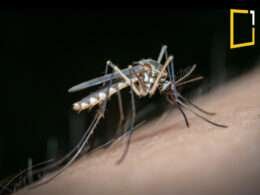The electric eel is a fascinating animal that provides a great example of how electricity can be produced naturally.
The electric eel generates electricity by passing an electric current through its body. The body contains thousands of sensory organs called electroreceptors that help the eel find prey more efficiently than other fish species.
Two-thirds of its body does only that :
They contain three electric organs, made up of cells that work like batteries, giving off a charge of around 100 millivolts each.
The brain activates them through the nervous system, triggering a chain reaction
where each cell stimulates the ones around it, creating an electric current throughout the body that the eel can maintain for as long as an hour. It can even curl up to form an electrical loop to increase the intensity of the charges.
The electric eel’s body also contains thousands of sensory organs called electroreceptors that detect changes in water pressure and detect prey by detecting changes in electrical properties caused by motion or vibration. These sensors help the eel find prey more efficiently than other fish species, which typically rely on their vision rather than their sense of smell to track down food.
The intensity can vary from small 50 millivolt charges to orient itself to 860-volt charges that can neutralize virtually any animal.












